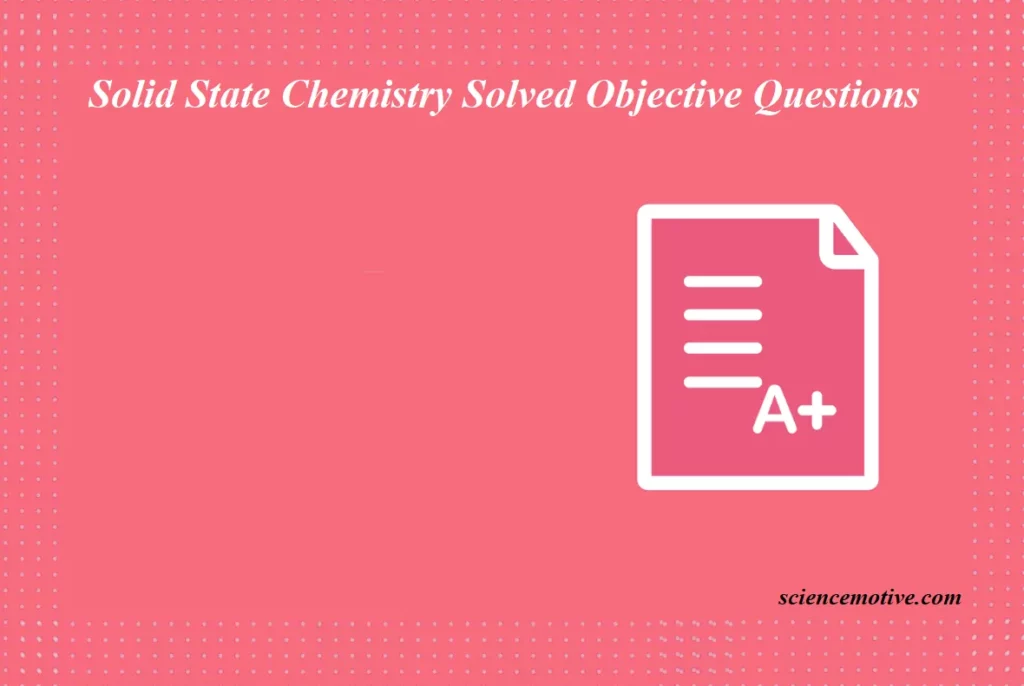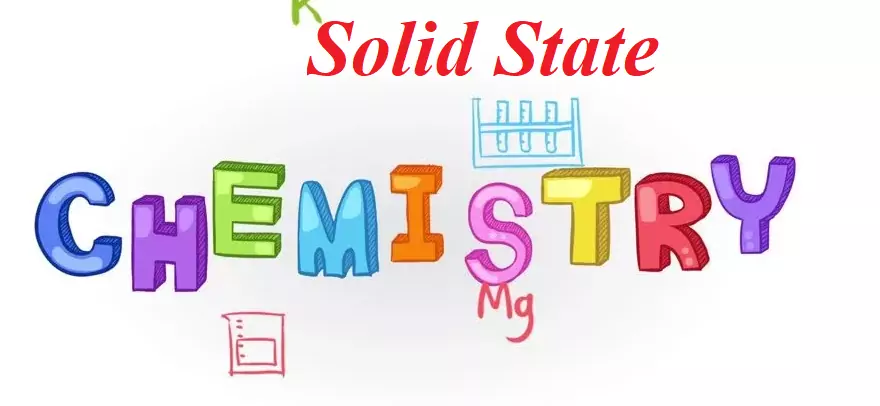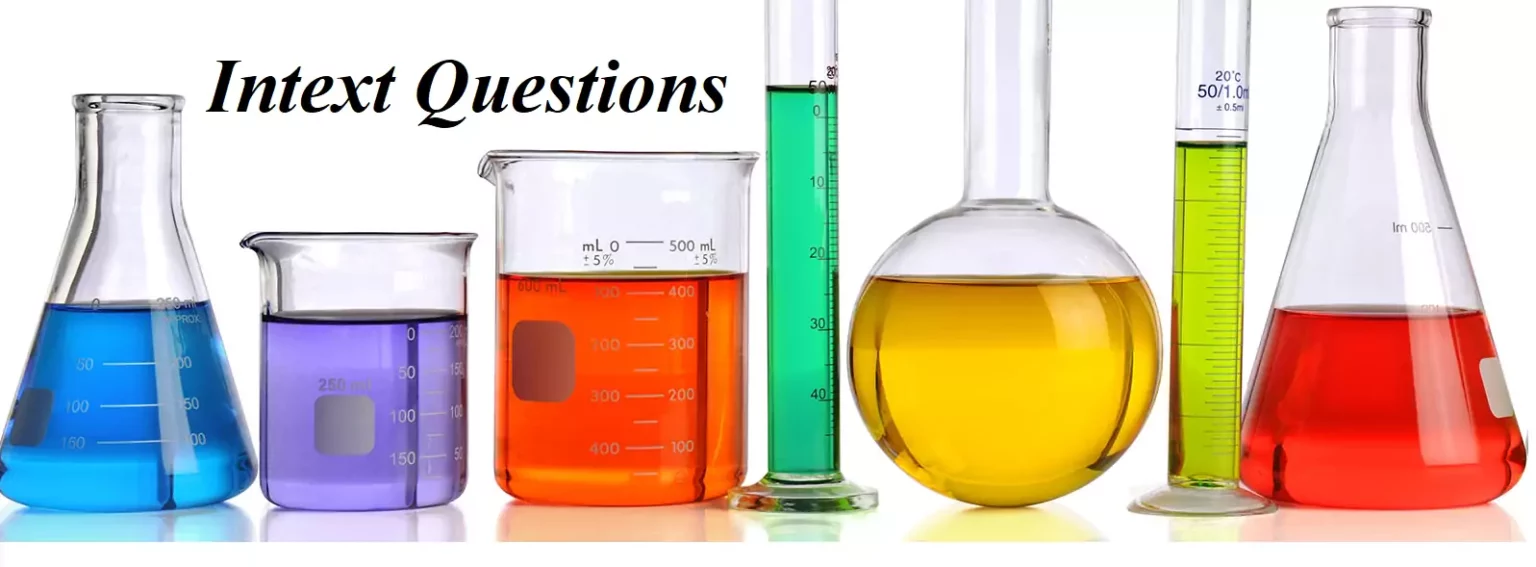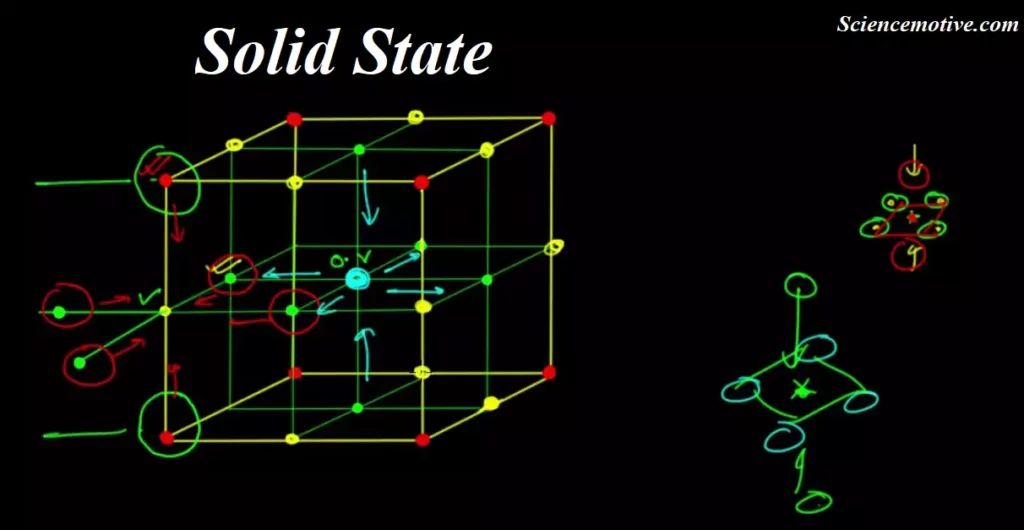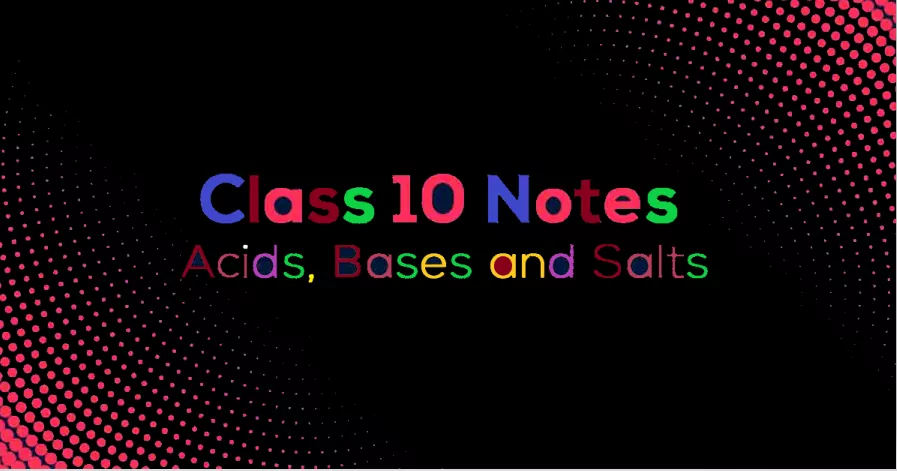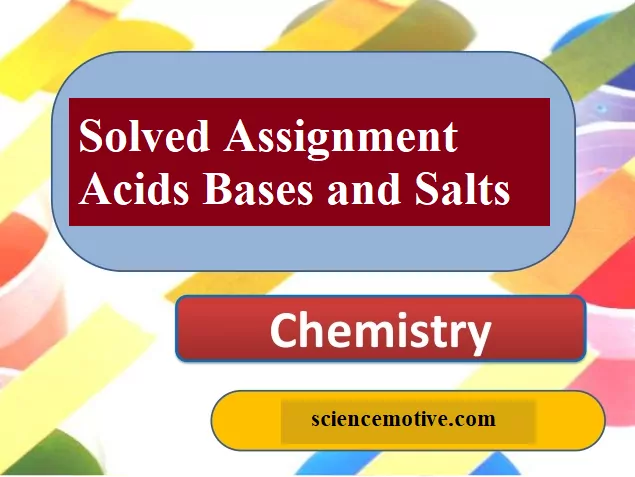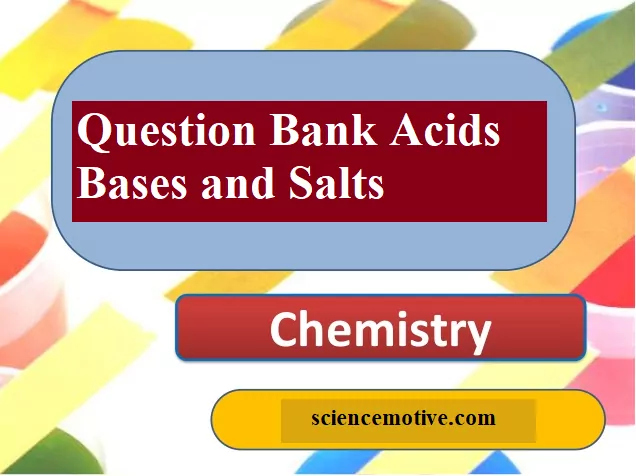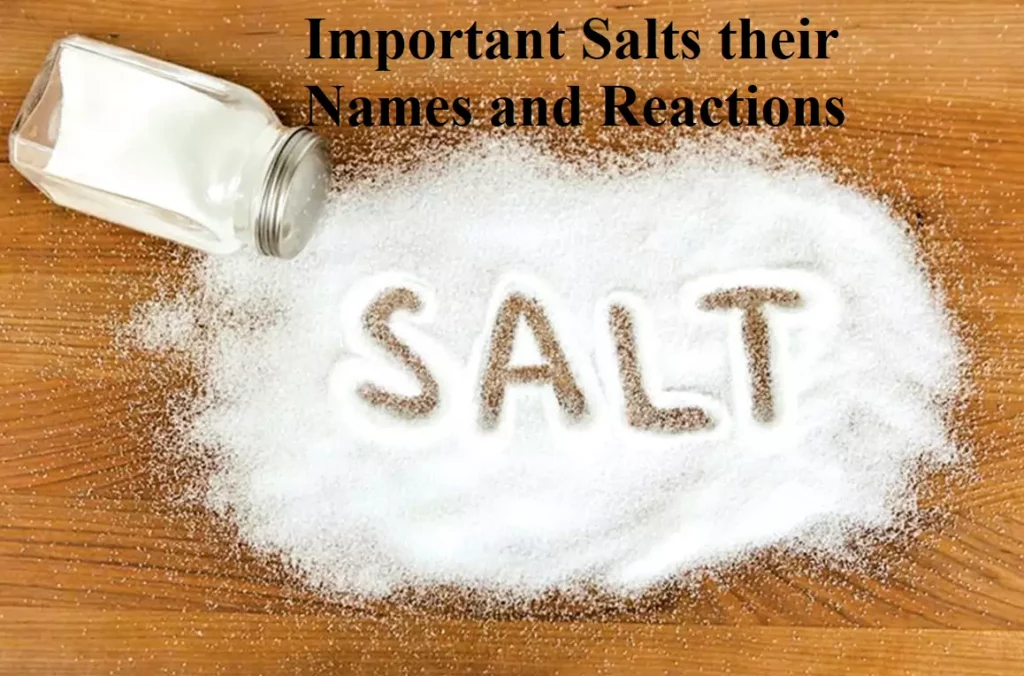Solid State Chemistry Solved Objective Questions Que 1. Experimentally it was found that a metal oxide has the formula M0.98O1. M is present as M2+ and M3+ in its oxide. Fraction of metal which exists as M3+ would be a. 7.01% b. 4.08% c. 6.05% d. 5.08% Ans 1. (b) Explanation: Ratio of the numbers of M atoms to the number of O atoms is M : O = 0.98 : 1 = 98 : 100 Total…
Author: Dr. Vikas Jasrotia
Solid State Important Questions with Answers 1. The crystal with metal deficiency defect is (a) NaCl (b) FeO (c) KCl (d) ZnO Ans 1. (b) 2. Which type of defect has the presence of cations in the interstitials sites? (a) Schottky defect (b) Vacancy defect (c) Frenkel defect (d) Metal deficiency defect Ans 2. (c) The defect forms when an atom or smaller ion (usual cation) leaves its place in the lattice, creating a vacancy, and becomes an interstitial by lodging in a nearby location. 3. Which of…
NCERT Chemistry Class 12 Chapter 2 Intext Solutions NCERT Intext Questions Chapter – Solutions Que 1. Calculate the mass percentage of benzene (C6H6) and carbon tetrachloride (CCI4) if 22 g of benzene is dissolved in 122 g of carbon tetrachloride. Ans 1. Mass of solution = Mass of Benzene (C6H6) + Mass of Carbon Tetrachloride (CCl4) = 22 g +122 g = 144 g Mass percentage of Benzene = 22/144 × 100 =15.28 % Mass % of CCl4 = 122/144 × 100 = 84.72 % Que 2. Calculate the mole fraction of benzene in solution containing 30% by mass in carbon…
Class 12 Solid State NCERT Solutions Intext Solutions The Solid State Que 1.1: Why are solids rigid? Ans. The intermolecular forces of attraction that are present in solids are very strong. The constituent particles of solids cannot move from their positions i.e., they have fixed positions. However, they can oscillate about their mean positions. This is the reason solids are rigid. Que 1.2: Why do solids have a definite volume? Ans. The intermolecular forces of attraction that are present in solids are very strong. The constituent particles of solids have fixed positions i.e., they are rigid. Hence, solids have a…
Ncert Solutions for Class 12 Chemistry Chapter 1 Exercise Solutions The Solid State Que 1. Define the term ‘amorphous’. Give a few examples of amorphous solids. Ans 1: A solid is said to be amorphous if the constituent particles are not arranged in any regular fashion. They may have only short-range order. Amorphous solids are generally obtained when the melts are rapidly cooled, e.g., glass, plastics, amorphous silica, etc. Que 2. What makes a glass different from a solid such as quartz? Under what conditions could quartz be converted into glass Ans 2: Glass is an amorphous solid in which…
NCERT Solid State Intext Solutions Que 1.1: Why are solids rigid? Ans. The intermolecular forces of attraction that are present in solids are very strong. The constituent particles of solids cannot move from their positions i.e., they have fixed positions. However, they can oscillate about their mean positions. This is the reason solids are rigid. Que 1.2: Why do solids have a definite volume? Ans. The intermolecular forces of attraction that are present in solids are very strong. The constituent particles of solids have fixed positions i.e., they are rigid. Hence, solids have a definite volume. Que 1.3: Classify…
Acids Bases and Salts Class 10 Notes ACIDS Acid is a substance that furnishes H+ ions or H3O+ ions when dissolved in water. Acids have one or more replaceable hydrogen atoms. The word acid is derived from the Latin name ‘Acidus’ which means Sour Taste. Substances with a ‘sour taste’ are acids. Lemon juice, vinegar and grape juice have a sour taste, so they are acidic. Substances that turn blue litmus solution red are called acids. CLASSIFICATION OF ACIDS: 1. Based on Source: Acids are of two types Mineral acids (Inorganic acid), Organic acid. (a) Acids that are obtained from minerals and rocks are called Mineral acids. For e.g.,…
Solved Assignment Acids Bases and Salts Que 1. Fresh milk has a pH of 6. How do you think the pH will change as it turns into curd? Explain your answer. Ans 1. The pH of milk is 6. As it changes to curd, the pH will reduce because curd is acidic in nature. The acids present in it decrease the pH. Que 2. What is a neutralization reaction? Give two examples. Ans 2. A reaction in which an acid and base react with each other to give salt and water is termed a neutralization reaction. In this reaction, energy is evolved…
Question Bank Acids Bases and Salts Que 1. Define the terms: Acid, alkali and salt. Ans 1. An acid is a compound, which releases hydronium ions (H3O+) as the only positive ions in solution. An alkali is a compound, which releases hydroxyl ions (OH-) as the only negative ions in solution. Salt is one of the products of neutralization between an acid and a base; water being the only other product. OR A salt gives positive ions other than H+ ion and negative ions other than OH- ion in solution. Que 2. Identify the number of replaceable hydrogen ions (H+) in the following…
Important Salts their Names and Reactions SALTS A Salt is an ionic compound that is made up of two groups of oppositely charged ions. The ion with a positive charge is called a cation, and the one with a negative charge is called an anion. Classification of Salts (1) Normal salts: A normal salt is obtained by complete neutralization of an acid by a base. NaOH + HCl → NaCl + H2O (2) Acid salts: Acid salts are derived by the partial replacement of hydrogen ions of an acid by a metal. When a calculated amount of a base is added to a polybasic acid, acid salt…
